#Whistler Blackcomb
Explore tagged Tumblr posts
Photo

Whistler Blackcomb trail map tracker
by u/jakegreenhalgh
63 notes
·
View notes
Text
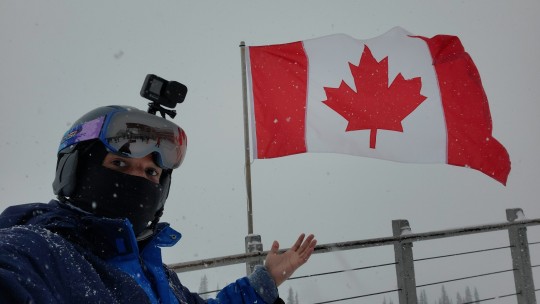


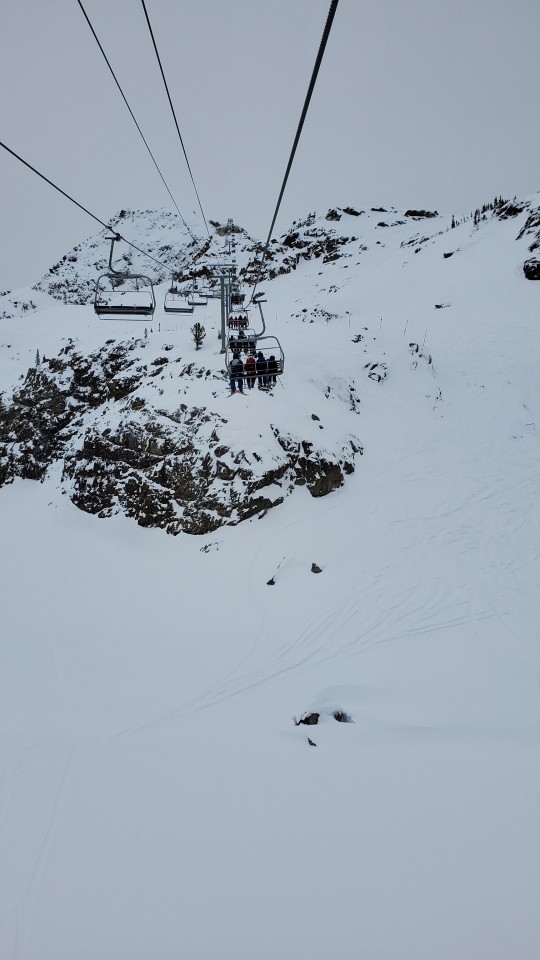
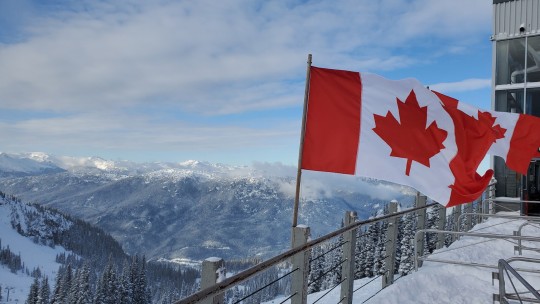
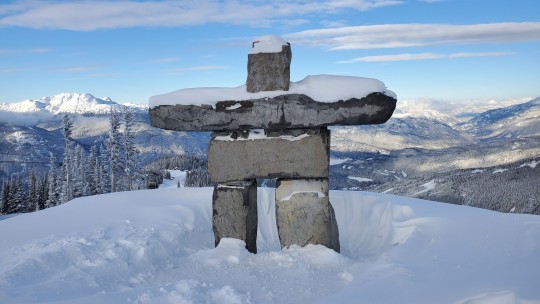

Survived some more snowy adventuring 7,160 feet up. Thanks for the hospitality this week, northern neighbors~ 🇨🇦
10 notes
·
View notes
Text
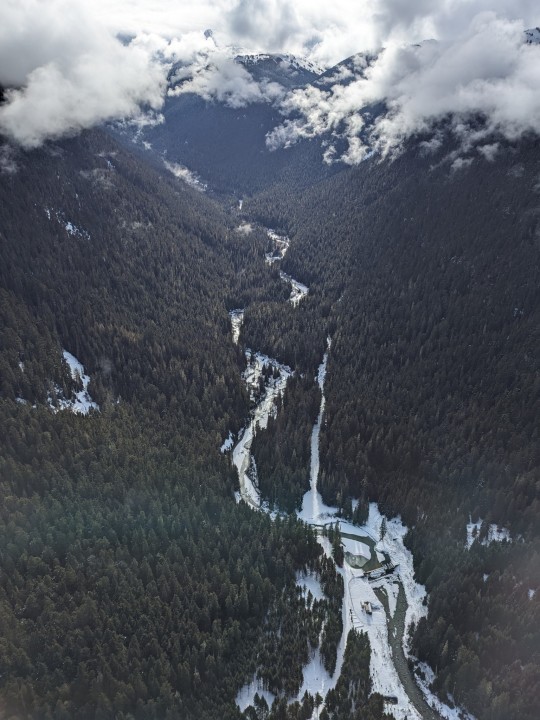




I wanted to share some pictures I took today that I liked because my dad has decided to make me feel bad about my own feelings
#whistler blackcomb#whistler#blackcomb#peak2peak#peak to peak#I can feel unconfident when i stopped using a snowboard after like 15 years and getting a new one that behaves completely differently
2 notes
·
View notes
Text
Discover the Magic of Whistler Blackcomb!
Looking for the ultimate ski adventure? ⛷️ Whistler Blackcomb offers world-class slopes, breathtaking views, and an unforgettable winter experience! Whether you're a beginner or an expert, there's something for everyone. Enjoy powder-perfect runs, après-ski delights, and cozy mountain lodges. Don't miss out—plan your Whistler getaway today!

0 notes
Text
Trail to Discover British Columbia’s Indigenous Heritage Weaves Through Whistler-Blackcomb
Audain Art Museum, Whistler © Karen Rubin/goingplacesfarandnear.com By Karen Rubin, Travel Features Syndicate, goingplacesfarandnear.com My whirlwind odyssey to learn about the renaissance of British Columbia’s indigenous heritage takes me to Whistler-Blackcomb, the world-famous ski resort. The mountain resort, one of the largest in North America, is on First Nations land and is where a…

View On WordPress
#Audain Art Museum#Audain Museum#Destination Canada#First Nations#Indigenous BC#indigenous heritage#indigenous tourism#Indigenous Tourism BC#Squamish Lil&039;wat Cultural Centre#Whistler Blackcomb
0 notes
Photo

2023 World Ski & Snowboard Festival x Whistler. (via Mitch Winton)
Hundreds of skiers and snowboarders will make their way from Vancouver to Whistler on the Sea to Sky Highway for [WSSF], the ultimate après of the winter season since 1996 [...].
For 2023, the annual celebration of snow sports, music, arts, and culture will be showcasing Whistler’s reputation as a mecca for mountain culture by returning to its grassroots origins focused on Sea to Sky artists and athletes.
Events scheduled from April 10-16.
#yvr#media#events#vancouver#vancity#british columbia#lower mainland#whistler#ski#skiing#snowboard#snowboarding#whistler blackcomb#snow#boarding#festival
0 notes
Text
Whistler Blackcomb Resort Update - The Squamish Reporter
Whistler Blackcomb has reported another fatality at the resort, marking the second such tragedy this year. For more information, visit https://www.squamishreporter.com/2024/01/28/second-fatality-confirmed-at-whistler-blackcomb/
0 notes
Photo

Whistler, BC ❤️🔥❤️🔥❤️🔥❤️🔥 coming here to snowboard has now made me feel like I’ve hit a new love for snowboarding! Finally got toe side down and was able to record myself snowboarding ❣️❣️! Small wins for this little shawty ❄️❄️❄️🏂🏂#tesiatravels #tesiamunches #snowboard #whistler #blackcomb #bigassslope #snowseason #endlessmountains #bc #canada #freerange #spacious #reunion #apresski #dranks #tabledancing #snowtrips #newfriends #constipation (at Whistler Blackcomb) https://www.instagram.com/p/CotEJzDvtPO/?igshid=NGJjMDIxMWI=
#tesiatravels#tesiamunches#snowboard#whistler#blackcomb#bigassslope#snowseason#endlessmountains#bc#canada#freerange#spacious#reunion#apresski#dranks#tabledancing#snowtrips#newfriends#constipation
0 notes
Text
So, I got this commentary in the tags:

Well, thanks for asking, because: I'll explain it.

Here's what each part is:
deeper blue: the rope (a big, thick metal cable)
white: the chair assembly; not really relevant for this discussion
olive: what we're defining as "static", for the purposes of this discussion — the block connecting the chair assembly to the grip mechanism
magenta: the grip jaws
dark green: a hinge (one on each side)
cyan: the grip opening mechanism, which is only engaged upon entering the station
purple: the bar which pushes back against the springs
yellow: rubber springs
And here's how it works in practice:

The operation of the grip centres around the "static" part, which serves two purposes: both holding all the dynamic parts in place, and also carrying a fair portion of the grip force to the cable-grip interface, where friction is what *directly* holds it all in place.
So the elastic component of the force works roughly like this:
Screws (olive) hold the bar (purple) in place.
The bar is under some degree of compression, pushing back against (and, due to its shape, in an inward direction) relative to the springs (yellow).
The springs, in turn being pushed by the bar, push down against the grip jaws (magenta).
The grip jaws, attached to the fixed assembly by hinges (dark green), respond to this downward force by rotating up.
By rotating up, the jaws push the rope (blue) up against the fixed assembly. The rope is now subject to force both from roughly the bottom left and bottom right as well as the direct top.
And the gravitational component of the force works a bit like this:
The fixed assembly (olive) presses down on the rope (blue).
The rope presses up against the upper part of the grip jaws (magenta).
The upper part of the grip jaws, being pushed up in that fashion, undergoes a rotational force around the hinges (dark green), which pulls the lower part of the grip jaws in against the cable from below.
This additional force itself causes further force against the fixed assembly.
So this sounds all fine and dandy, but what if you…
…damage the sources of that elastic force by means of, say, cooling them repeatedly to a temperature where they gradually become permanently less elastic?
The screws (olive) are probably still just fine, and the bar (purple), being metal, is pretty resilient to the unimpressively cold temperatures the lower half of Whistler Mountain gets — say, basically never below –15°C.
The bar does its thing, pressing against the springs (yellow)…
…which are putting out far less force than they should be, given their currently low temperature and frequent cycling between cold and colder, which means they aren't pushing as hard as they should be against the grip jaws (magenta).
The grip jaws, pivoting around those hinges (dark green), respond to this below-spec downward force by rotating up with below-spec force.
By rotating up too weakly, the jaws don't provide as much force against the rope (blue) as they need to to withstand certain conditions, resulting in a situation where the friction at the top, bottom right, and bottom left of the rope could, due to some other force being removed, for some reason, could become insufficient to keep the chair on the rope.
…take gravity out of the equation?
It's probably worth noting here that the section of the rope where the failure occurred at was at an angle of about 40°, where a fair portion of gravity's force, under perfect conditions, would already not be pressing in the right direction, directly fighting the grip's friction rather than assisting the grip's gravitational redundancy.
Oh no, there's been an emergency stop, and the chair is just coming down from the apex of a particularly sharp bounce! This means that the fixed assembly (olive) is currently applying exactly zero force down on the rope (blue).
Due to the lack of gravity, the rope isn't pushing up against the upper part of the grip jaws (magenta).
The upper part of the grip jaws, being subject to no force at all, do not have any gravity helping them rotate inward more forcefully, thus leaving the only force in that direction being the already dangerously weak force of the springs (yellow).
There is now basically no force between the rope and the fixed assembly, absolutely no force between the upper parts of the grip jaws and the rope, and just a bit between the lower parts and the rope. The freefall that the chair enters as it returns from the apex of that bounce translates into downward acceleration which overcomes the friction remaining against the rope, and the chair subsequently accelerates right into the chair ahead of it.
And that's what that diagram was getting at.
What the heck's the deal with tower 6 on the Big Red Express (1997–2022) at Whistler-Blackcomb?
So, on Whistler Mountain, there was this one chairlift, the Big Red Express (due to be replaced in time for the 2022–2023 ski season with a new lift by the same name), which was notable for, mostly, being remarkably miserable to ride on snowy, windy days; being ten minutes long; and:

This is a rare design feature on ropeways, which only really happens when there's a serious elevation differential across the several metres separating each side of the ropeway. Usually, they'll just build a tower tall enough to support both sides of the cable, unless it's way cheaper to not do that. Which, well, it is here.
But there's another thing that's weird about that tower. Like, here, let me show you a basically identical lift built by the same company, Doppelmayr, around the same year:
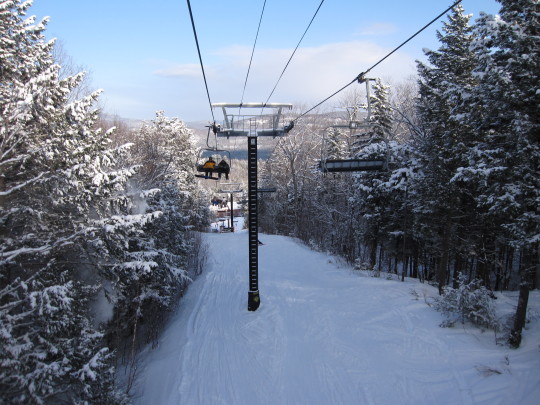
Check the tower heads on both — the ones on the second picture are normal for that manufacturer in that era. So where did the Big Red get its weird towers from?
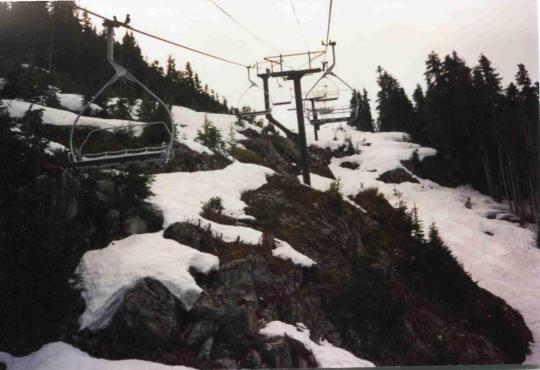
The Redline Express, installed in 1992. I'll get into why it only lasted five ski seasons in a bit, but basically, they ended up having to put that little side tower in because that lift was itself replacing the original Red Chair (1965–1992). Which was built, well, very differently from the big, beefy high-speed lifts that started to become the main workhorses of large ski resorts in the '80s, and which also had chairs that didn't require quite the same vertical clearance or other such space:

So, reusing the same alignment, which was the most direct route from "the top of whatever lift comes up from the base at Creekside" to "up a hill from the main lodge on the mountain, so that people can ski down to the ski racks", but with chairs that need way more vertical clearance and can support larger gaps between towers, meant sticking in a little side tower to make sure people's skis wouldn't brush against the snow (or worse!). Speaking of "worse", though, let's get into why the Redline was replaced maybe a sixth of the way into its theoretical service life:

Think about how it works in practice. For clarity, this is a device intended to secure hundreds of kilograms of metal and passengers to a rope, usually in temperatures below freezing, under conditions where forces on the cable, such as those that occur in the event of an emergency stop, can result in reduced or absent gravitational force acting on the chair.
And for more clarity, look at the upper part of the "jaws" on the cable, and where the hinges are relative to the "jaws". Just one more thing: those tension-providing devices aren't lazily drawn metal springs; they're rubber "marshmallow" springs.
Can you see where the problem might be with this setup? Because this guy didn't:

Meet Janek Kunczynski, the founder of Lift Engineering & Manufacturing Co., AKA Yan, who might as well be the Elon Musk of ropeways. Before I get deeper into just how disastrous his detachable grip design was, let me show you another Incredible™ (derogatory) example of his engineering sensibilities:


Allow me to remind you that this is usually operating in sub-zero temperatures, and that this specific lift was often subject to considerable wind and snow. As in, when mechanics were working on this chairlift, they'd have to do that with no protection from the elements. (It's also at least rumoured within the ropeway and ski resort industries that his lifts were routinely welded together in ski resort parking lots.) His whole thing was, basically, making lifts look cool and implementing them cheaply, to undercut his European competitors, which led not just to impractical designs that were hostile to the people maintaining them or prone to breaking down, but to his company's lifts killing at least five people and injuring at least seventy.
Which brings us back to Whistler:
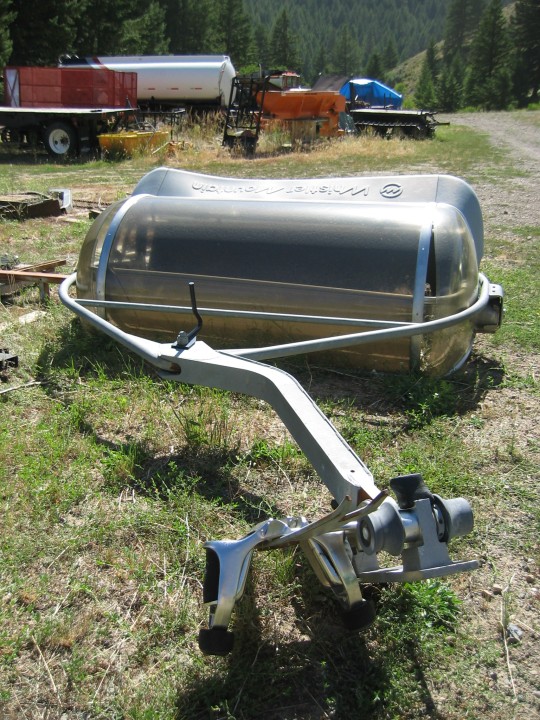
Whistler, at the time in an arms race to outcompete Blackcomb, its neighbour, but lacking the sort of venture capital backing Blackcomb had, wanted to put in some high-speed lifts to be able to match the skiing experience at Blackcomb, which had already bought several such lifts from Doppelmayr (after buying several low-speed lifts from Yan). So they figured they'd take the cheap route, and get three high-speed lifts, of a fairly unproven design, installed. These were to replace three ancient lifts that were, at that point, constraining the resort's capacity.
While the Redline and Green both served through their five years of operation without any serious issues, the same can't be said for the Quicksilver Express, which was the only chairlift Yan ever built with "bubbles" on it — which required a slightly enhanced grip, to handle the additional weight.
It wasn't enhanced enough, though. On December 23rd, 1995…


The Quicksilver, specifically, was an unmitigated dumpster fire, even before any accidents happened. It was designed such that, in wind, grips could smack against towers, taking on damage in the process. It had a faulty brake system that would apply maximum braking force via the emergency brake when a normal stop is what the operator pressed the button for. At least a few empty chairs had straight up fallen off the cable before the accident. And then there were the grips.
These grips received multiple retrofits and rebuilds throughout the few years the lift was operating, which never seemed to help — they slipped so often that operators on the lift just stuffed paper into the grip force alarm to muffle it. The clearance between grips and towers was known to be below code, and Whistler stated that they simply couldn't fix it. Upon testing the grips after the accident, of 29 tested, every single one failed to perform adequately.
Furthermore, there was the whole thing with the rubber and the claws. Rubber springs lose performance at much less extreme temperatures than metal springs, and the way the grips were designed, a lot of their grip force relied on the chair applying force via gravity. Take away gravity, and the grip can slip. Take away gravity on a particularly steep section of the lift line, and you've got a cascade of chairs knocking each other off of the cable until they ram into a tower and fall to the ground.
So it was 1997, and Whistler, on the edge of going bankrupt from lawsuits and lost business, had to get rid of the other Yan high speed lifts, which were likely safer, but not safe enough. Some resorts retrofitted theirs to use a better grip design, but Whistler just got rid of them…
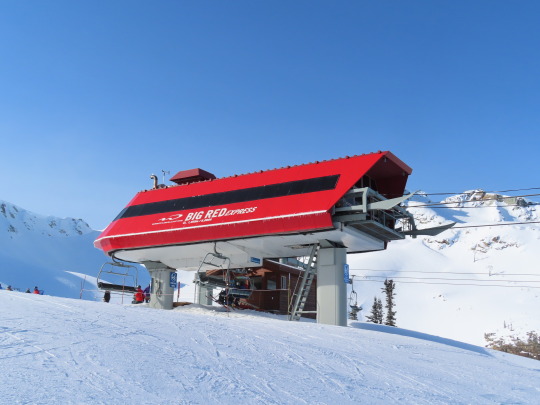
…other than the towers.
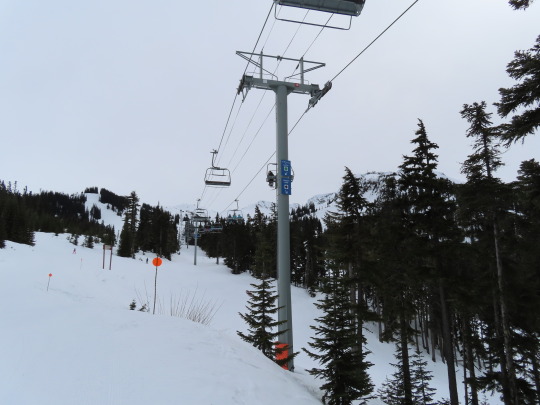
#ropeway#chairlift#skilift#engineering#deep dive#Whistler-Blackcomb#ropeway accident#Lift Engineering#Janek Kunczynski#chairlift accident#1995#Whistler Mountain#detachable grip#longpost#Whistler BC
76 notes
·
View notes
Text

The PEAK 2 PEAK has the longest unsupported span in the world.
Photo ~ Andrew Strain
Whistler/Blackcomb BC 🇨🇦
163 notes
·
View notes
Text
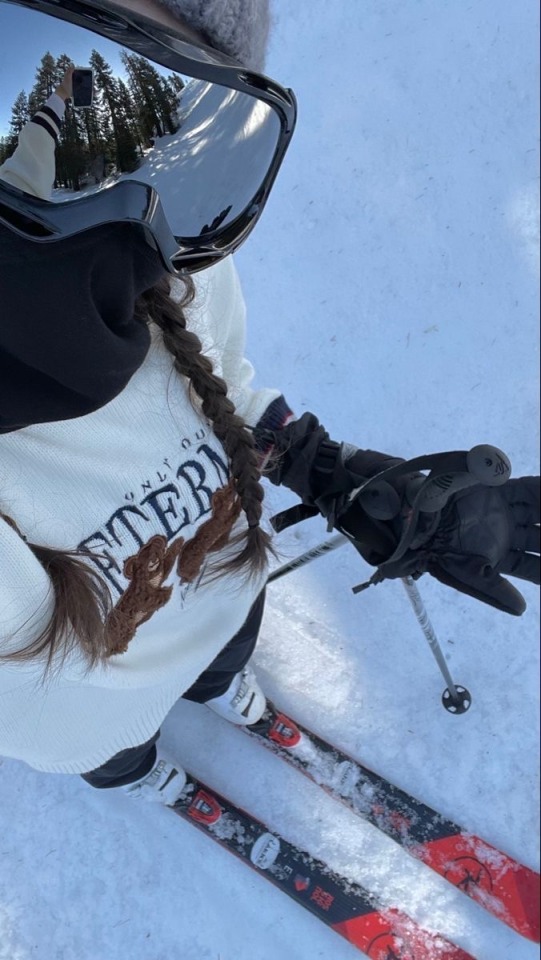
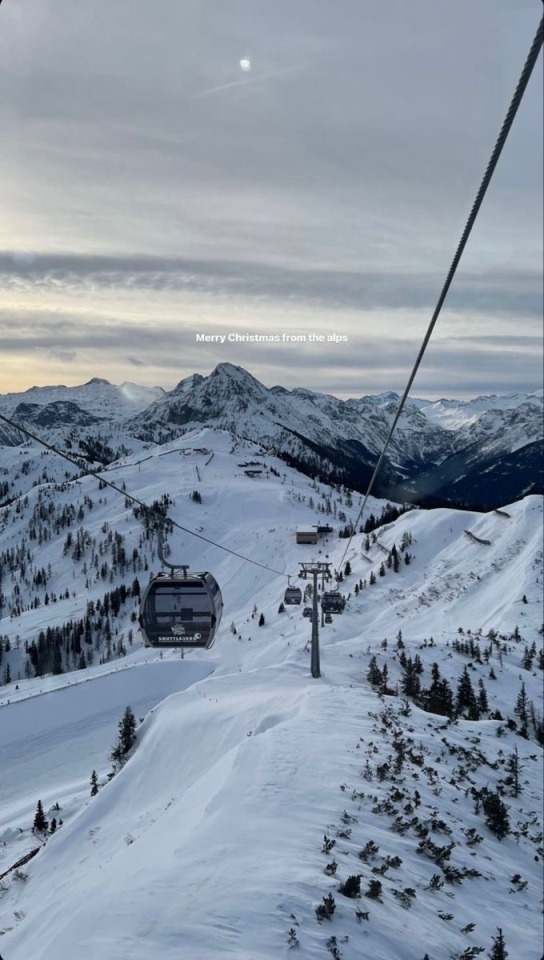


Skiing - a beginner’s guide
I first went skiing in Switzerland with my friends nearly 10 years ago and I loved it. The feeling of the wind on my face, the speed, the adrenaline- it was exhilarating.
I’ve compiled a basic list of ski events, a semi-scandalous article and some of the best destinations in the world as well as some budget friendly ones.
Socialite ski events:
Snowboxx:
Since it launched in 2013, winter festival Snowboxx has been growing in popularity - and it involves flying out to the Alps for a week-long ski party. It takes place in Avoriaz ski resort, Morzine, France each March, and this year saw a superstar lineup of artists performing in the mountains, including ex-Radio 1 DJ Annie Mac, Becky Hill, Jax Jones, Sonny Fodera and Andy C.
The combination of partying to some of the world's best DJs, with the unusual day-activites of skiing and snowboarding, are making many turn away from the summer festival circuit in favour of the winter one.
Hahnenkamm, Kitzbühel , Austria:
The Hahenekamm ski race weekend in Kitzbühel is arguably the biggest alpine ski event in the world. The world’s best take on the iconic Streif downhill track, which is historically the toughest ski race track on the World Cup circuit. A lot of the speed skiers consider winning races here as a bigger honour than the Olympics. As a spectator, the atmosphere is electric with fans around the world admiring some breathtaking ski racing.
X Games, Aspen, USA:
The world’s best freestyle skiers and snowboarders compete annually in Aspen. The event is a prestigious honour to win amongst action sports athletes and has propelled careers. Spectating the event is excellent because you can see most of the action from the viewing areas. The halfpipe events in particular are excellent to watch for this reason.
European Snow Pride, Tignes, France:
Tignes is home to Europe’s biggest gay ski week, with the European Snow Pride. Each day has a theme with nights of brit-pop to superhero days. Many international DJs are invited to play each evening party in the resort’s local clubs and bars.
Slightly scandalous tales: Things I Never Knew About Skiing Until I Was a Private Instructor in Aspen
Really interesting read. I was thoroughly entertained.
Popular ski destinations:
1. Whistler Blackcomb, Canada
Whistler makes it onto pretty much every ‘World Top 10’ list when it comes to ski resorts
2. Niseko, Japan
Located on the northern island of Hokkaido, this Japanese skiing destination is a snow-covered paradise. With a huge 15 metres of average snowfall, it’s no wonder that Niseko is the country’s premier ski resort.
3. Zermatt, Switzerland
As the highest resort in the Alps, it’s got the views. The incredible peak of the Matterhorn can be seen from just about anywhere on the slopes! It also boasts the greatest vertical drop in Switzerland, and there’s all year round skiing at the Matterhorn Glacier.
4. Courchevel, France
The resort is a part of the world’s largest alpine ski area, offering more than 600 kilometres of terrain and interconnected ski runs across 10 summits. The snow here is well-groomed, and there’s a legendary black run that’s considered to be one of the trickiest in the world.
5. Cortina D’Ampezzo, Italy
Known only to the most dedicated, well-travelled skiers prior to the 1956 Winter Olympics, Cortina is a hidden gem in Italy’s Dolomite Mountains.
6. Baqueira-Beret, Spain
It may be a surprising destination for skiing, but Baqueira-Beret in Spain is one of the best places in Europe where you’ll find value for money for a ski holiday. You’ll be able to find affordable accommodation as well as some of the finest tapas restaurants in the country.
7. Ylläs, Finland
The arctic landscapes of Lapland are perfect for skiing. If you dream of snow-dusted trees, the magic of the Northern Lights, or the glow of the midnight sun, Ylläs is a unique winter resort that you won’t want to miss. As Finland’s largest ski resort, it’s got everything you need.
Budget friendly destinations
1. Vogel, Slovenia
An ideal spot for couples or families, this Slovenian spot is a truly beautiful and peaceful ski area. Overlooking Lake Bohinj, Vogel is part of the Triglav national park.
2. Livigno, Italy
Duty-free zone Livigno offers excellent slopes for intermediate skiers. But advanced skiers and snowboarders will be kept busy too – especially if they’re keen to explore off piste.
3. Poiana-Brasov, Romania
Poiana Brasov is Romania’s biggest mountain resort and certainly one of the nicest. The fairytale slopes, flanked by pine trees, are the perfect place to take your skis. With more than 24km of ski runs, there’s plenty to explore.
4. South Korea -Muju Deogyusan Resort
Muju Deogyusan Resort in Jeolla province is only 3 hours away from Seoul. So, if you want to spend your holiday skiing and still enjoy the city of Seoul, this is the place to go.
5. Niseko Ski Resort
Located in Hokkaido, Japan, Niseko Ski Resort boasts a total of four different resorts but with linked ski area. A single pass would give you access to all four resorts. One of the resorts, Mt. Resort Grand Hirafu has been officially named as Japan’s number one snow resort due to the wide array of activities offered.
6. India - Gulmarg
Gulmarg is a rare gem in the Himalayans that will undoubtedly take your breath away with its picturesque beauty. However, skiing in Gulmarg, Kashmir is not for the weak-hearted as the terrains are not suitable for beginners - to add to that, the ski lifts carry you to the highest point in the Himalaya at 13, 780 feet!
7. China - Nanshan Ski Resort
80km away from Beijing, Nanshan Ski Resort is perfect for skiing and snowboarding as the snow are neither too hard nor too soft.
#c suite#powerful woman#strong women#ceo aesthetic#personal growth#that girl#productivity#q/a#getting your life together#balance#skiing#sports#socialite
332 notes
·
View notes
Text
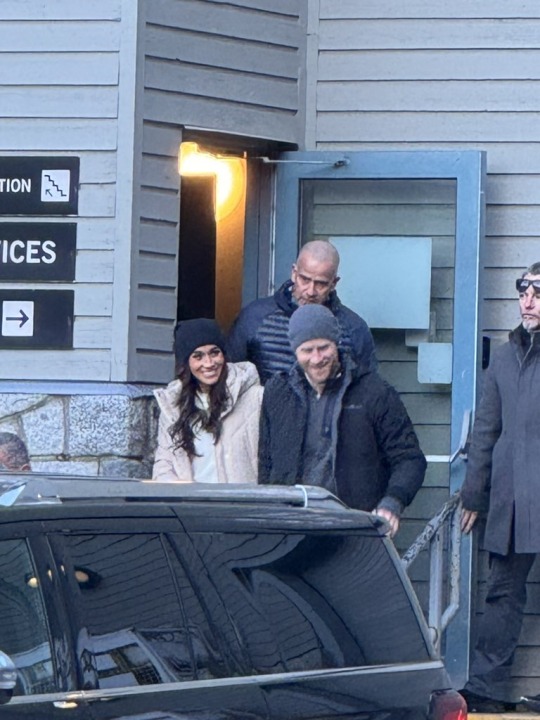








The Duke and Duchess of Sussex at the Invictus Games Vancouver Whistler 2025 One Year to Go events at the top of Whistler Blackcomb. (2/14/24)
#meghan the duchess of sussex#meghan and harry#meghan markle#prince harry#duchess of sussex#harry and meghan#the sussexes#duke and duchess of sussex#duchess meghan#duke of sussex#princess meghan#invictus games
61 notes
·
View notes
Text


Whistler Blackcomb, British Columbia | Canada
#mountains#snowboarding#lifts#blue#sky#snow#Canada#british columbia#photography#photooftheday#nature#winter
11 notes
·
View notes
Text
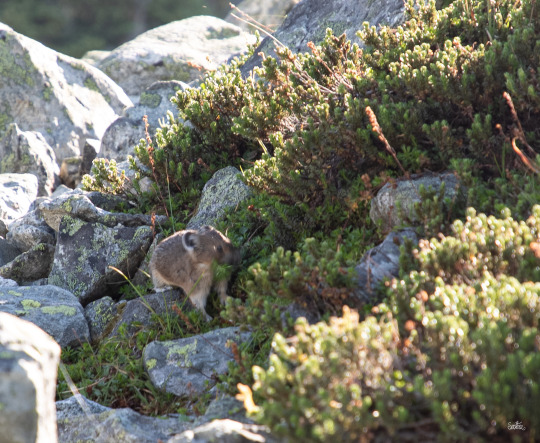
Nailed It!!!
Well, not really :)
My reflexes are slow and wildlife is fast! Missed the shot on this pika. I love pikas, but haven't found them much and the few times I have, they just haven't been cooperative. No nice still posing for me, I did have better luck with the marmots that day, at least. :)
I always thought pikas were of the rodent family, they are so small and round. Turns out they of they are of lagomorphs family which includes rabbits and hares. It just makes them all the cuter.
Canon 5D4, Blackcomb Mountain, Whistler, BC, September 2022
#original photographers#photographers on tumblr#nature photography#wildlifephotography#wildlife#pika#lensblr#cute animals#canon 5d mark 4#mountain#adorable animals#missed opportunity#naturephotography#photography on tumblr#nature
31 notes
·
View notes







